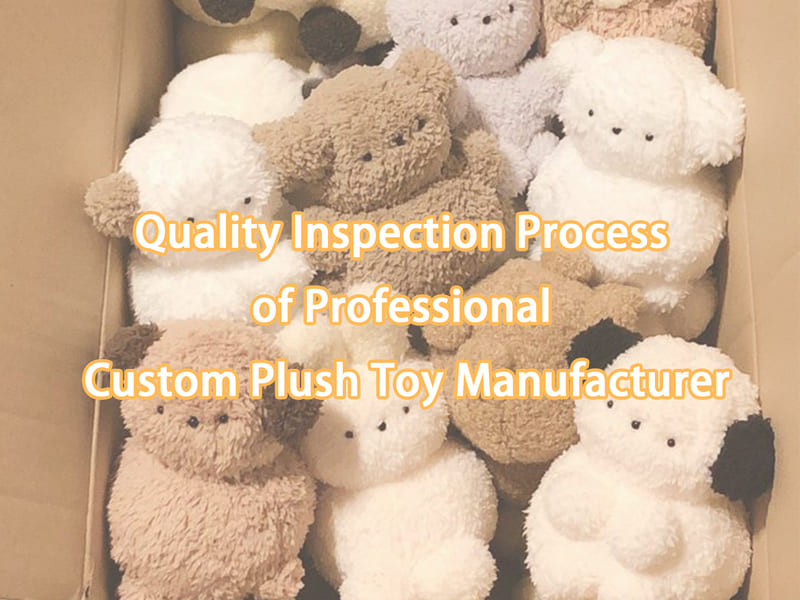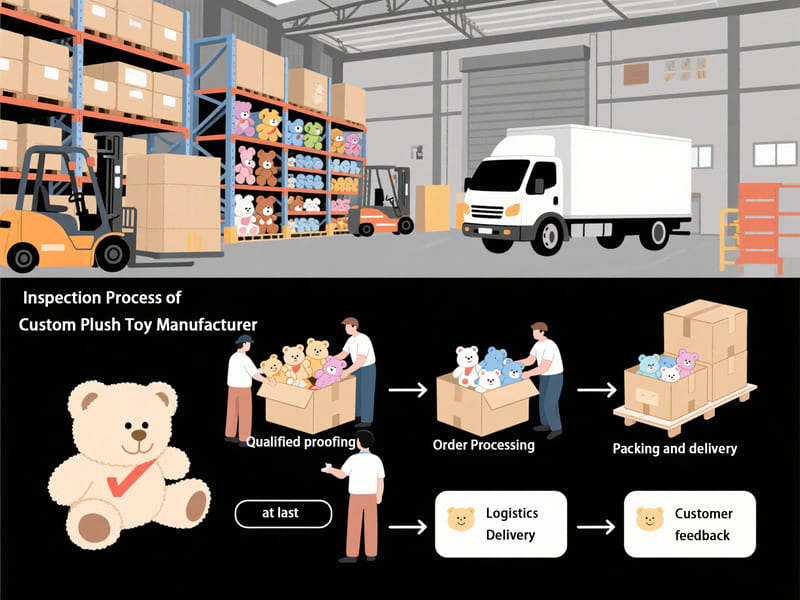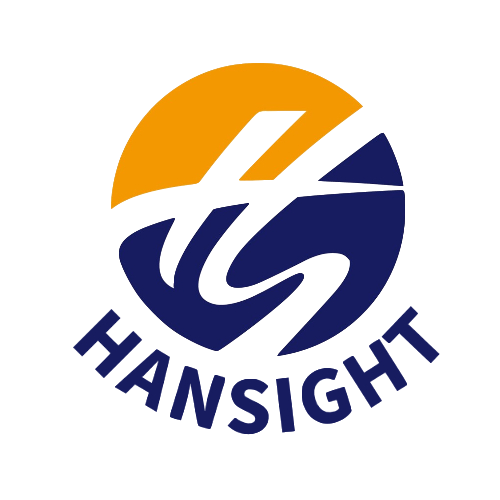
Quality Inspection Process of Professional Custom Plush Toy Manufacturer
Table of contents |
|
1.Incoming material inspection: Control the quality of plush toys from the source |
|
2.Quality control nodes throughout the production process |
|
3.Finished product inspection and common inspection tools |
|
4.International quality standards and certification system |
|
5.Hansightoy's quality management practices and commitments |
Under the cute, soft and healing appearance, plush toys are actually highly specialized products, especially in the field of customization. Nowadays, more and more brands choose custom stuffed toys as promotional carriers or creative peripherals. Behind this is not only a competition of creativity, but also a competition of quality.
Consumers value not only the appearance of the toy, but also whether it is safe, non-toxic and durable - this is an insurmountable threshold for every custom stuffed toy manufacturer. Any omission may lead to product recalls, damage to brand reputation and even legal liability. Therefore, a rigorous, systematic and scientific quality inspection process has become the core standard for judging the professionalism and credibility of manufacturers.
This article will comprehensively analyze how professional plush toy custom manufacturers control product quality from six aspects: raw material entry, production process, finished product inspection, inspection tools, international standards and corporate practices.

Incoming material inspection: Control the quality of plush toys from the source
The manufacture of high-quality plush toys begins with the control of raw materials. Professional custom manufacturers will conduct a series of strict inspections and audits in the procurement of raw materials to ensure that each batch of materials meets safety and environmental standards.
The first is fabric testing. Commonly used fabrics include ultra-soft short plush, crystal velvet, PV velvet, etc. Manufacturers will conduct color fastness tests (friction resistance, saliva resistance), formaldehyde content testing, pH value testing and odor testing. Fabrics must comply with environmental protection standards such as OEKO-TEX 100, REACH or EN71 Part 9.
The second is filler screening. The most common is polyester fiber filling cotton, which requires no inhalable particles, no fluorescent agent, and good fluffiness. Some high-end customized products will also use beans, memory foam, EVA or recycled materials, which also need to be tested one by one for their source and safety.
The third, accessories review.Accessories (such as eyes, noses, Velcro, zippers, etc.) need to meet the safety test standards for small objects to avoid falling off and causing the risk of swallowing by infants and children. In addition, the qualifications of suppliers must also be reviewed clearly to ensure that they meet the requirements of relevant regulations and certification systems.
Quality control nodes throughout the production process
Once the raw materials are qualified in storage, they will enter the production stage. A professional custom stuffed toy manufacturer usually has multiple quality control nodes (QC Point) to ensure the consistency and reliability of semi-finished products and final products.
- Cutting process: Workers cut plush cloth according to paper patterns, and need to use laser or computer cutting machines. At this time, it is necessary to ensure dimensional accuracy, no burrs, no errors, and avoid subsequent sewing deviation.
- Sewing process: All sewing processes must ensure consistent stitch length, firm thread ends, and smooth corners. At the same time, "mid-inspection" is carried out to detect whether there are problems such as missing seams, skewness, and misalignment of accessories.
- Filling process: Filling is divided into manual and pneumatic methods, the purpose is to achieve full body shape and moderate hardness. Quality inspectors will perform hand feel tests and weighing and verification according to standards to avoid unevenness or excessive compaction.
- Assembly and shaping: During the installation of parts (such as ears, tails, and clothes), special attention will be paid to the position of the needle eye, tightness, and symmetry to ensure the overall aesthetics of the product.
- Pre-packaging review: Inspection before bagging or boxing includes size review, batch number record, tag and washing label content verification, etc., to ensure that there is no missing information or operation error.

Finished product inspection and common inspection tools
After the product is completed, finished product inspection is the most critical quality checkpoint. This stage involves a wide range of content, fine inspection indicators, and more professional equipment.
Common inspection items:
- Appearance and structural integrity: Check whether there is dropped line, holes, accessories falling off, stains, etc
- Dimension and weight deviation: Error control is carried out according to the design drawings, and ±1cm deviation is usually allowed
- Hand feel test: Determine whether it is too hard, too soft or has internal foreign matter
- Durability test: such as Velcro, suture pull test
- Metal needle inspection test: Prevent production interruption needle residue
Main tools used:
- Metal detector needle inspection machine: All products must undergo needle inspection before shipment to ensure that there is no ferromagnetic residue
- Tension tester: Test whether the tensile strength of accessories (such as zippers and buttons) meets the standard
- Flammability tester: Test the burning speed of toys when exposed to fire according to EN71 Part 2 to ensure that they are not flammable
- Drop test bench: Simulate repeated drops in infant and child use scenarios to test structural stability
These devices help manufacturers eliminate quality risks that are "difficult to detect with the human eye" in advance, ensuring that the toys finally delivered meet high quality standards.
International quality standards and certification system
As a globally circulated product, plush toys must meet the quality standards of major export markets. The following are the most common regulatory systems and testing specifications:
| Standard Name | Applicable regions | Main content |
| EN71 | European Union | Physical and mechanical tests, combustion tests, chemical substance restrictions, etc. |
| ASTM F963 | USA | Small parts safety, heavy metal detection, structural durability, etc. |
| CPSIA | USA | Lead content, phthalate restrictions, tracking labels |
| ISO 8124 | International | Comprehensive physical + chemical + flammability standards |
| GB 6675 | China | Domestic mandatory toy safety standards |

Hansightoy's quality management practices and commitments
As a professional plush toy custom manufacturer, Hansightoy has established a complete quality management system covering four stages: incoming material inspection, process inspection, finished product inspection and shipment inspection, ensuring that every link meets strict standards.
The company has formulated standardized operating procedures, equipped with a professional quality inspection team, implemented regular employee training and quality improvement meetings, actively responded to customer feedback, and continuously improved product quality.
Hansightoy is well aware that each plush toy is not just a commodity, but also a bond of trust between the brand and consumers. Therefore, the company is committed to creating safe and reliable customized products with professionalism and integrity.
